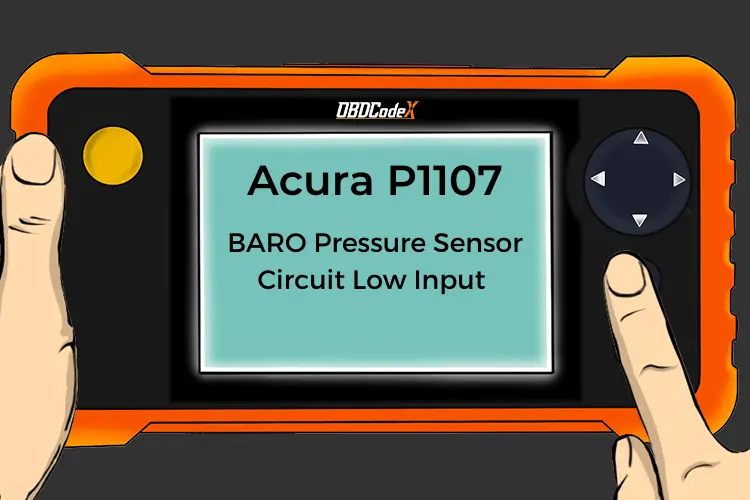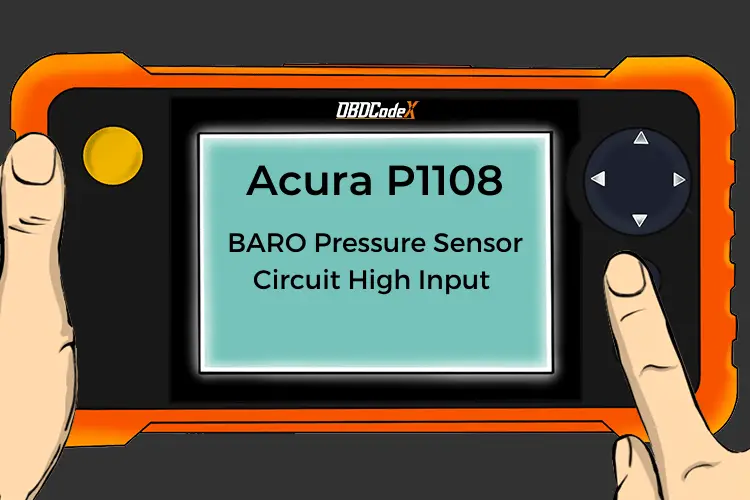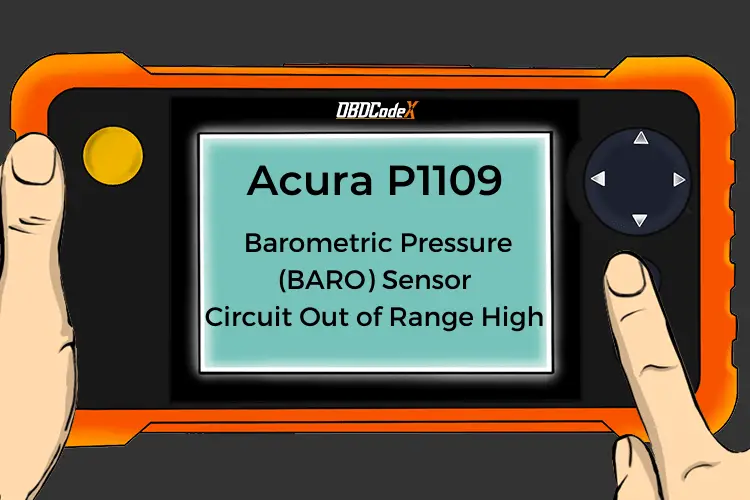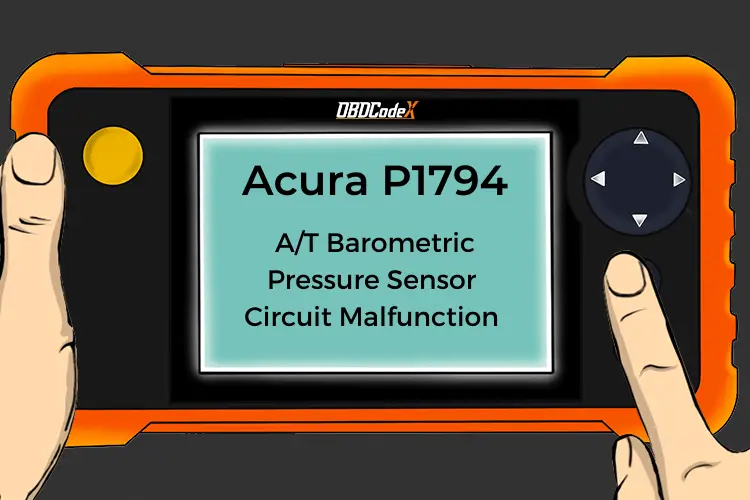P0129: Barometric Pressure Too Low
Is your scanner showing P0129?
No worries. We'll show you what it means and how to deal with it.
P0129: Barometric Pressure Too Low
OVERVIEWWhat Does The P0129 Code Mean?
When you find a P0129 code stored in your OBD-II equipped vehicle, it means that the powertrain control module (PCM) has detected a low barometric pressure reading from the barometric pressure sensor (BPS) or the manifold absolute pressure sensor (MAP).
The barometric pressure sensor lets the PCM monitor changes in atmospheric pressure. Atmospheric pressure is related exactly to the particular degree of altitude, as it applies to your vehicle.
This information is used by the PCM to help calculate fuel delivery and ignition timing strategy.
The barometric pressure sensor is usually supplied with a reference voltage signal, a battery ground, and one (or more) output signal circuit/s.
The BPS completes the reference voltage circuit and provides the appropriate resistance as determined by actual barometric pressure.
As changes in atmospheric pressure occur, BPS resistance levels react accordingly. Fluctuating resistance in the BPS causes changes in sensor output voltage to the PCM.
These changing voltage signals are not only used by the PCM to map fuel delivery and ignition timing strategy but also compared to programmed parameters for code storing.
Because automakers uses varying designs for monitoring barometric pressure, you will need to consult your vehicle information source (All Data DIY is a good one) to determine the exact BPS design of your vehicle.
Most manufacturers use a BPS that is separate from the MAP sensor. It is mounted away from the engine and typically has a vacuum hose connected to it.
Some models use a system in which the BPS integrated with the MAP sensor. In this type of system, manifold absolute pressure is usually substituted for barometric pressure and the scanner data stream will reflect this terminology.
If the PCM detects a BPS input signal that varies from comparison data by more than the programmed limit, a P0129 will be stored and a MIL will possibly be illuminated.
What Are The Symptoms Of The P0129 Code?
Symptoms of a P0129 code may include:
- Excessively rich fuel delivery conditions
- General lack of engine performance
- Hesitation upon acceleration
- Black smoke from exhaust
- Diminished fuel efficiency
What Are The Potential Causes Of The P0129 Code?
Possible causes for this code include:
- Corroded connector face at the MAF/BPS sensor
- Insufficient engine vacuum due to engine wear, an ignition misfire or clogged catalytic converter
- Faulty BPS
- Open or shorted wiring for the MAP sensor and/or the BPS
- Insufficient system ground at the MAF/BPS
- Defective PCM or PCM programming error
How Can You Fix The P0129 Code?
Preparation
A good starting point is always to check for technical service bulletins (TSB) for your particular vehicle. Your issue may be a known issue with a known fix put out by the manufacturer and can save you time and money during diagnosis.
When I am diagnosing a P0129, I know that I will need a diagnostic scanner, a digital volt/ohmmeter (DVOM), a vacuum gauge, and a reliable vehicle information source (such as All Data DIY).
Step 1
I normally like to begin my diagnosis with a visual inspection of all system related wiring harnesses and connectors. Any damaged wiring or corroded connector faces should be repaired before proceeding with the diagnosis.
Step 2
I would continue by connecting the scanner to the vehicle diagnostic connector and retrieving all stored codes. Next, I like to make a note of all codes and freeze frame data as this information may prove useful in the event that I am dealing with an intermittent code. Next, I clear the codes and test-drive the vehicle to see if the code is reset.
If it is, I would perform a manual engine vacuum test to ensure that the engine is making sufficient vacuum. I would consult my vehicle information source for specifications that apply to my vehicle.
Step 3
If the engine is not performing efficiently, it will not produce enough vacuum for the BPS or MAP sensor. Engine misfire codes, fuel system codes, and catalytic converter codes should be diagnosed and repaired before attempting to diagnose this code.
Step 4
Be aware that barometric pressure sensors which are integrated with the MAF sensor are subject to corrosion at the connector face. These types of systems are also prone to faults caused by an extremely dirty air filter element. I have also discovered that this type of BPS configurations will often require that an auxiliary ground be installed (depending upon manufacturer).
Step 5
Continue testing at the BPS if all circuits and connectors appear to be operational. Unplug the electrical connector and check resistance across all circuits of the BPS using the DVOM. If the sensor fails to comply with specifications, replace it.
If the BPS meets manufacturer’s specifications, begin testing system circuits. To prevent damage, disconnect all related controllers before testing system circuits with the DVOM. Repair or replace open or shorted circuits as needed.
Step 6
Suspect a defective PCM or a PCM programming error if the sensor and all circuits are compliant with manufacturer’s specifications. Consider all other possibilities before replacement and remember that replacement of system controllers will require reprogramming.
Additional diagnostic notes: For further diagnostic help, consult your vehicle information source for technical service bulletins that apply to the barometric pressure sensor, manifold absolute pressure sensor, or mass air flow sensor of your vehicle
Recommended Parts
Below are some recommended auto parts to help you address the trouble code affecting your vehicle and get it running smoothly again:
Note: During the purchasing process, please check carefully whether the part you want to buy fits your car!
Check This Video For Reference
Reference Sources
Diagnostic Trouble Code (DTC) Guide for P0129 – Ominitek Advanced Technologies, page 45.









